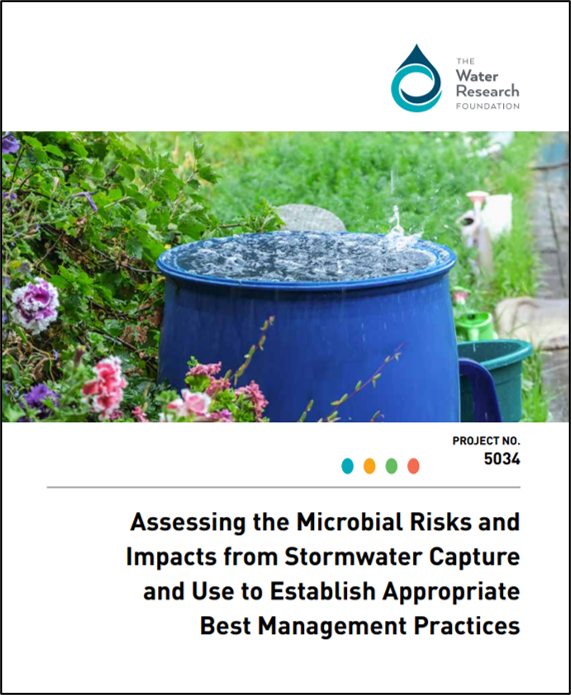Stormwater Capture & Use Guidance

Project Overview
Capture and use of stormwater offers a wide range of benefits including enhancement of local water supplies, combined sewer overflow reduction, and stormwater runoff volume and pollutant load reduction. However, implementation of stormwater use projects is not widespread due to lack of regulatory frameworks and design protocols for stormwater use.
Stormwater must be treated to ensure protection of human and environmental health. At the same time, consideration should be given to how and where the treated water will ultimately be used. This concept is known as “Fit-for-Purpose” water use, where the focus is matching the right source of water with the right treatment level appropriate for the right application.
Funded by the Water Research Foundation (WRF #5034), this project was designed to address the critical need for guidance on appropriate risk-based treatment levels for non-potable and potable uses to ensure stormwater use projects are protective of public health.
Technical Approach
This project synthesizes current research on stormwater microbial quality to develop a Stormwater Capture and Use Roadmap to provide pragmatic guidance on design and operation of stormwater use capture and systems (SCU) to be protective of human health specific to the source water end-use combination. The Roadmap was developed through a rigorous process including input from an Expert Panel, Project Advisory Committee, and partners from utilities and health departments across the U.S.
Guidance includes selection of appropriate log reduction targets based on quality of stormwater and intended end use, methodology for monitoring of stormwater microbial quality, and approaches for continuous monitoring of operational systems to ensure safe water is reliably delivered. Specifically, the SCU Roadmap documents the following:
- Appropriate log reduction targets based on the quality of stormwater and intended end use
- Methodology for monitoring stormwater microbial quality
- Approaches for continuous monitoring of operational systems to ensure safe water is reliably delivered
Focus Areas
- QA/QC Methods for Measurement of Stormwater Microbial Quality
- Traditional Fecal Indicator Bacteria (FIB)
- Human Microbial Source Tracking Markers (MST)
- Potentially Human – Infectious Pathogens
- Stormwater Microbial Quality
- Biological Surrogates for Pathogens
- Human MST Markers as Surrogates for Pathogens
- Temporal Fate and Storage of Pathogens
- Log Reduction Targets (e.g., sewage dilution rates)
- Treatment Process Trains
- Industrial End-Uses
Project Team
- Dr. Sybil Sharvelle, Professor – Colorado State University Dept of Civil and Environmental Engineering.
- Project Role: Principal Investigator
- sybil.sharvelle@colostate.edu
- Dr. Amos Branch – Water Reuse Technologist, Carollo Engineers, Inc.
- Project Role: Technical Lead
- Jumana Aljafari
- Project Role: Graduate Research Associate
- Sarah Millonig – Associate Director, One Water Solutions Institute
- Project Role: Project Coordinator
- sarah.millonig@colostate.edu
- Dr. Harry Zhang, Program Director – Water Research Foundation
- Project Role: Project Manager
- hzhang@waterrf.org
COLLABORATORS
This project is funded by the Water Research Foundation (project # 5034) with core participation from a variety of organizations and experts across the country including but not limited to:
- Wright Water Engineers
- Carollo Engineers, Inc.
- US Environmental Protection Agency
- EPCOR Water
- EOA Engineering
- Trussel Technologies
- New York City Dept. of Environmental Protection
- San Francisco Public Utilities
- Hazen & Sawyer
- Virginia Dept. of Environmental Quality
More information and access to project reports and other materials are available here: https://www.waterrf.org/research/projects/assessing-microbial-risks-and-potential-impacts-stormwater-collection-and-uses